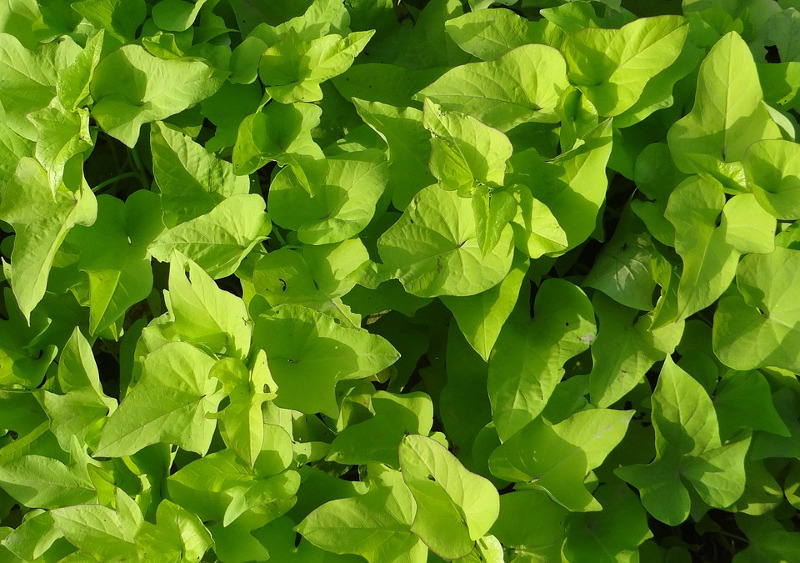Sweet potato vine is a trailing type plant that can grow to between 8 and 10 feet long. Depending on its location in your garden, you may want to trim it back. It’s a wonderful choice for a spiller plant in a container garden. Cut it back if it becomes a tripping hazard on stairs or across walkways.

When to Prune Sweet Potato Vines
Sweet potato vines are grown as annual plants in most climates. They are only hardy to about 45 degrees F. Prune them back anytime their length becomes excessive. Also, cut off any damaged stems and ones that have become leggy with little foliage. If healthy, the trimmings can be placed in water and left to root to create more plants.
How to Prune Sweet Potato Vines
Step 1 - Tool Selection
Use either scissors or pruners to trim the vine. You may be able to slice smaller diameter vines using your fingernail but will probably not make a sharp, clean cut.
Step 2 - Inspect the plant and decide where to cut
Look for damaged, sickly, or too lengthy vines.
Step 3 - Trim the plant
Use your selected tool to make cuts approximately 1/4 inch above leaf nodes. Cutting here will encourage new, bushier growth.
Step 4 - Use trimmings to create new plants (optional)
Select the healthiest-looking trimmings and place the cut end in a container of water. In a few weeks, the cut vines will grow roots.
How To Prune For Winter/Spring/Fall/Summer
Sweet potato vine is hardy in zone 9 and warmer. It can be grown as a houseplant in colder climates. Trim this vine anytime between spring and fall as necessary. Prune more often if you want a bushier and less vine-like shaped plant. Prune away damaged stems throughout the year.
Why Prune Sweet Potato Vines
Prune sweet potato vine to remove damaged stems. Pruning also encourages the production of side shoots to give the plant a fuller look. Prune back overgrown stems to tidy up your garden space or container garden area.
Sweet Potato Vine Pruning Tips
- Prune back damaged stems
- Save the cutting and add them to water to create new free plants
- Trim the vines if you want a thicker, fuller-looking plant
- Use scissors or pruners as a cutting tool
 |
Author Maureen Farmer - Published 12-16-2021 |
